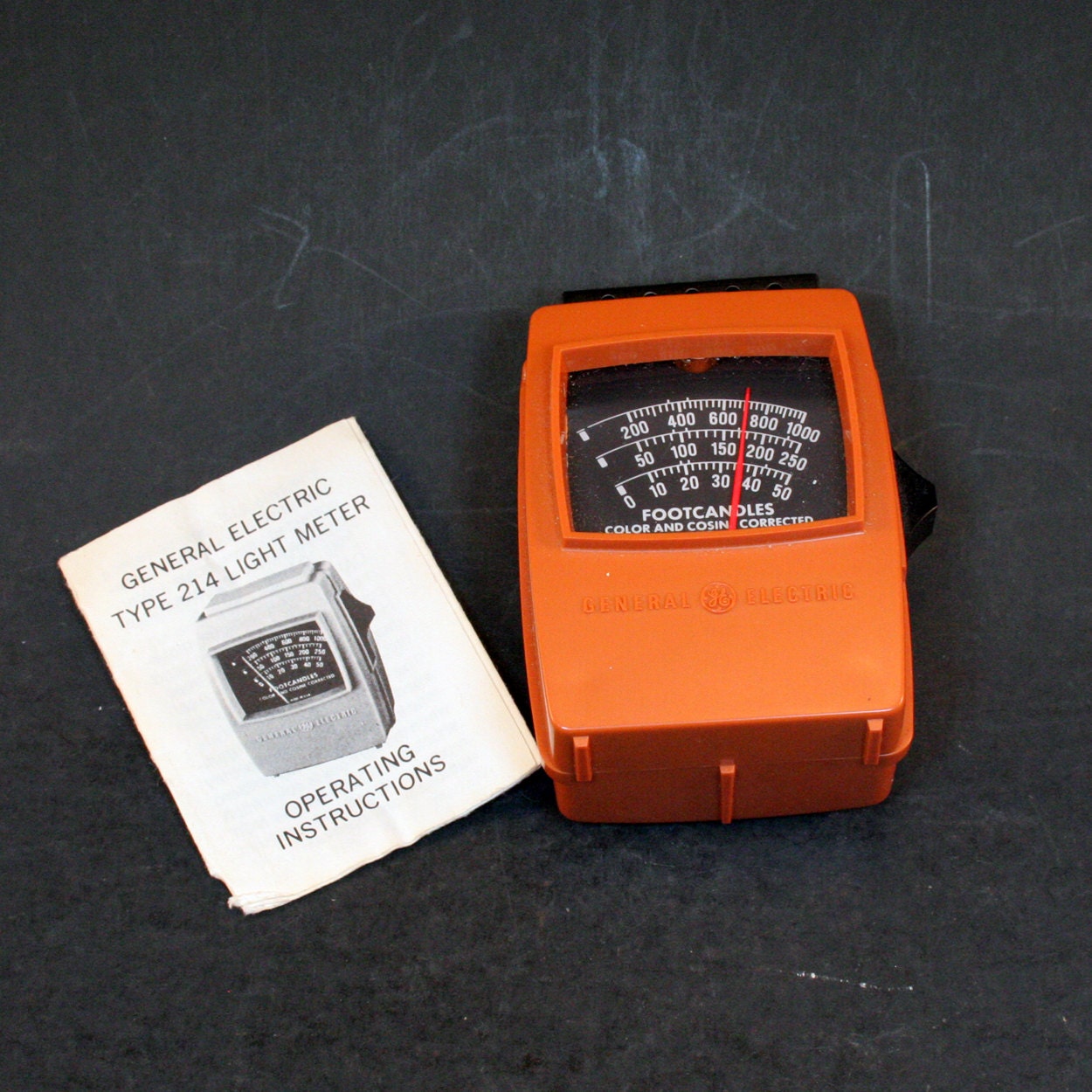Ge 214 Light Meter Manual
Jan 26, 2009 - Find the user manual and the help you need for the products you own. Instructions for light meter. Have meter but no instructions.
Page/Link: Page URL: HTML link: The Free Library. Retrieved Aug 20 2018 from. One piece of equipment that we probably all have used at one time or another is the Type 217 Light Meter. This pocket-sized instrument, manufactured by General Electric, has been around for more than 30 years. The only significant change over the years has been in outward appearance; the color of the case is now battleship gray.
The Type 217 Light meter measures approximately 2inchesx2inchesx3.5inches in its case and is ideal for field surveys of illuminance in schools, hospitals, kitchens, warehouses, offices, maintenance shops, and any other place where good illumination is essential. The handheld photometer determines the basic efficiency of the visible portion of the electromagnetic spectrum (380 to 760 nanometers) for a specific task. A direct reading provides a relatively accurate measurement of illuminance. Since the meter is color- and cosine-corrected, it mimics the color sensitivity of the human eye and can accurately measure light intensity from various directions. A special filter mounted over the meter cell corrects for color.
A diffusing plate on top of the meter collects light from wide angles so that the cell response will be a function of the cosine of the angle that the incident light makes with the perpendicular. This feature allows for flexibility in reading light intensities in tight and hard-to-reach spaces. The light meter is powered by a sensitized selenium cell that converts radiant light energy into electrical voltage; no batteries are required.
The electrical voltage activates a microammeter that causes a deflection of the needle. The needle deflection scale reads directly in footcandles (ft-c). Most state sanitary codes base illumination requirements on the footcandle, as do OSHA, NSF, the American Public Health Association, the American National Standards Institute, the Joint Commission on the Accreditation of Health Care Organizations, and the American Correctional Association. For this reason, the Type 217 Light Meter is ideal for most light measurements. The unit is capable of reading illumination from 10 ft-c to 1,000 ft-c on three scales. Accuracy is between 10 percent and 15 percent, depending on the part-of-scale. Although this may not seem very accurate, the Type 217 Light Meter is quite useful in screening areas for minimum lighting levels.
Football manager 2009 portuguese ltc. Retrieved 2008-09-14.

To measure the level of illumination incident on a surface, set the meter on the surface or hold it with the diffusing plate parallel to the surface. Avoid casting a shadow on the meter or reflecting extra light from light-colored clothing.
The scale switch on the side of the meter should be positioned all the way up to read the highest level of illuminance. The switch can then be moved to a lower illumination level until the light being measured registers on the scale. Low-level readings taken immediately after high levels have been measured may be incorrect; they may err on the low side because of temporary fatigue of the selenium cell.
Ensure accuracy by allowing a few minutes for the meter to adapt to the lower light levels. The black perforated metal plate provided with the unit is a 10X multiplier. When it is clipped over the white diffusing plate on the top of the meter, the user should multiply all scale readings by 10.
Ge 214 Light Meter Specifications
The maximum reading on the top scale is therefore 10,000 ft-c; cosine and color correction are not affected. The meter also can be used to estimate luminance of a diffuse surface, reflectance of a uniformly illuminated matte surface, and transmittance of a transparent or translucent material.
Simply follow the steps described in the clearly written operating instructions. The disadvantage of the Type 217 Light Meter is that it cannot measure illumination under 10 ft-c. Therefore, it is of limited use in the measurement of light levels in emergency egress routes against National Fire Protection Association standards. Although the unit is constructed with the latest taut-band construction for ruggedness, excessive shock can damage needle movement. We also found that the pointer may not be securely anchored and can fall off even when the unit has not been subjected to strong impacts.
Best Light Meter
Repairs are, however, easily made by removing three screws on the housing and replacing the pointer. If further repairs or instrument certification are needed, Weschler Instruments of Cleveland, Ohio, will make any nonwarranty repairs and calibrate the unit against a National Institute of Standards and Technology reference standard. Weschler Instruments can be reached at (216) 238-2550.

The Type 217 Light Meter is the most affordable (about $90.00) and probably the most versatile of all inexpensive light meters. It can be used in all field investigations and inspections and should be part of every sanitarian's arsenal of field instruments.